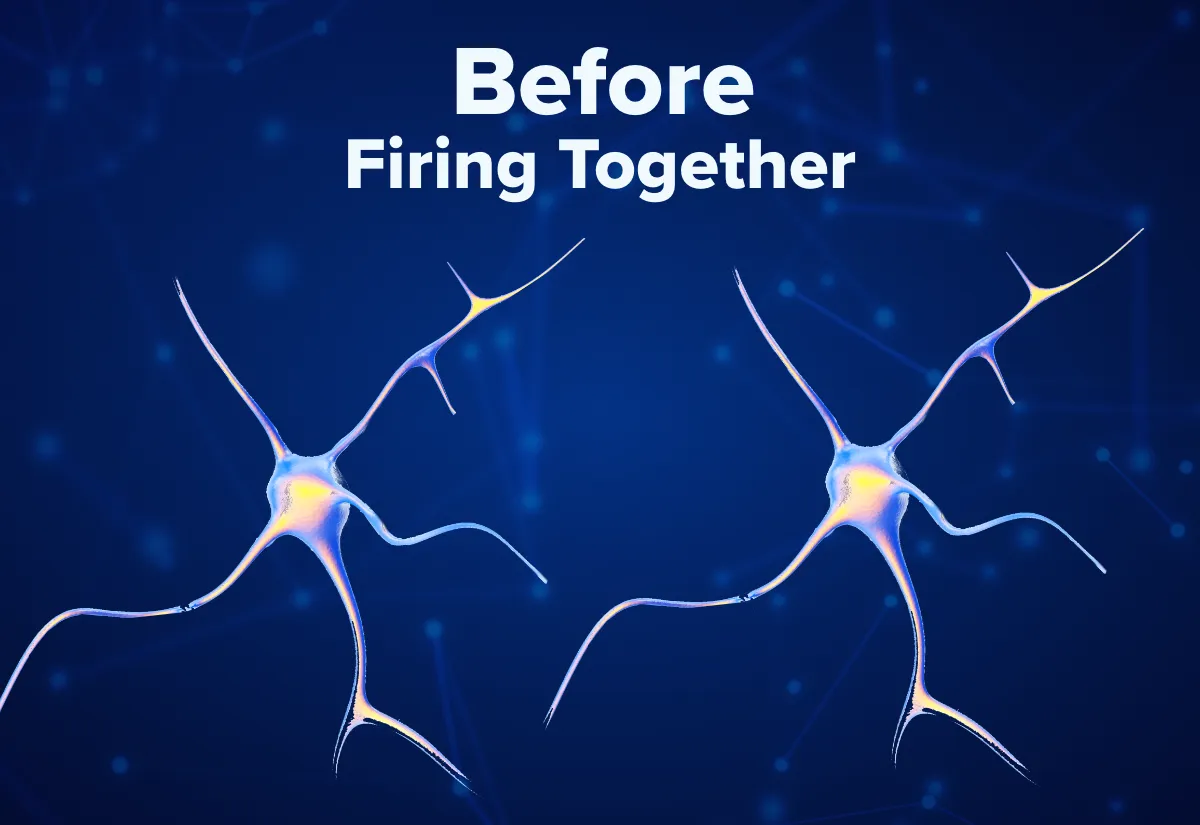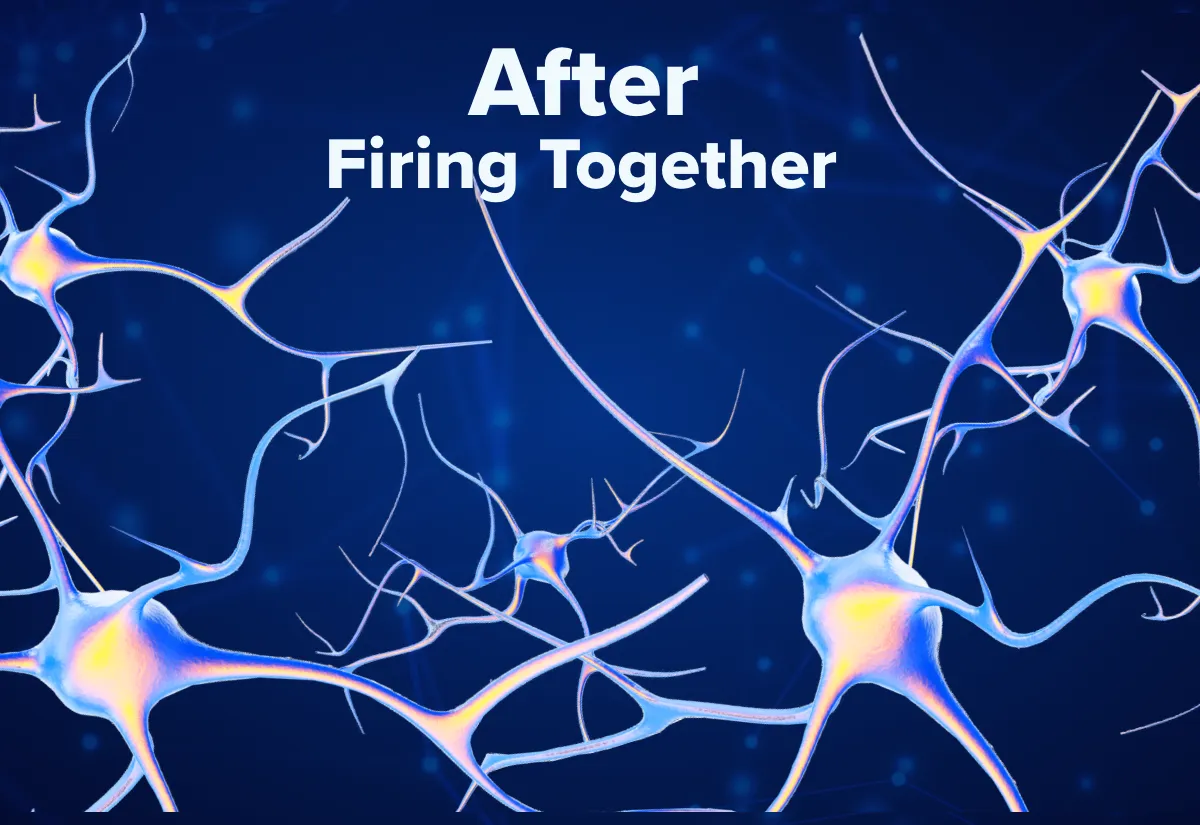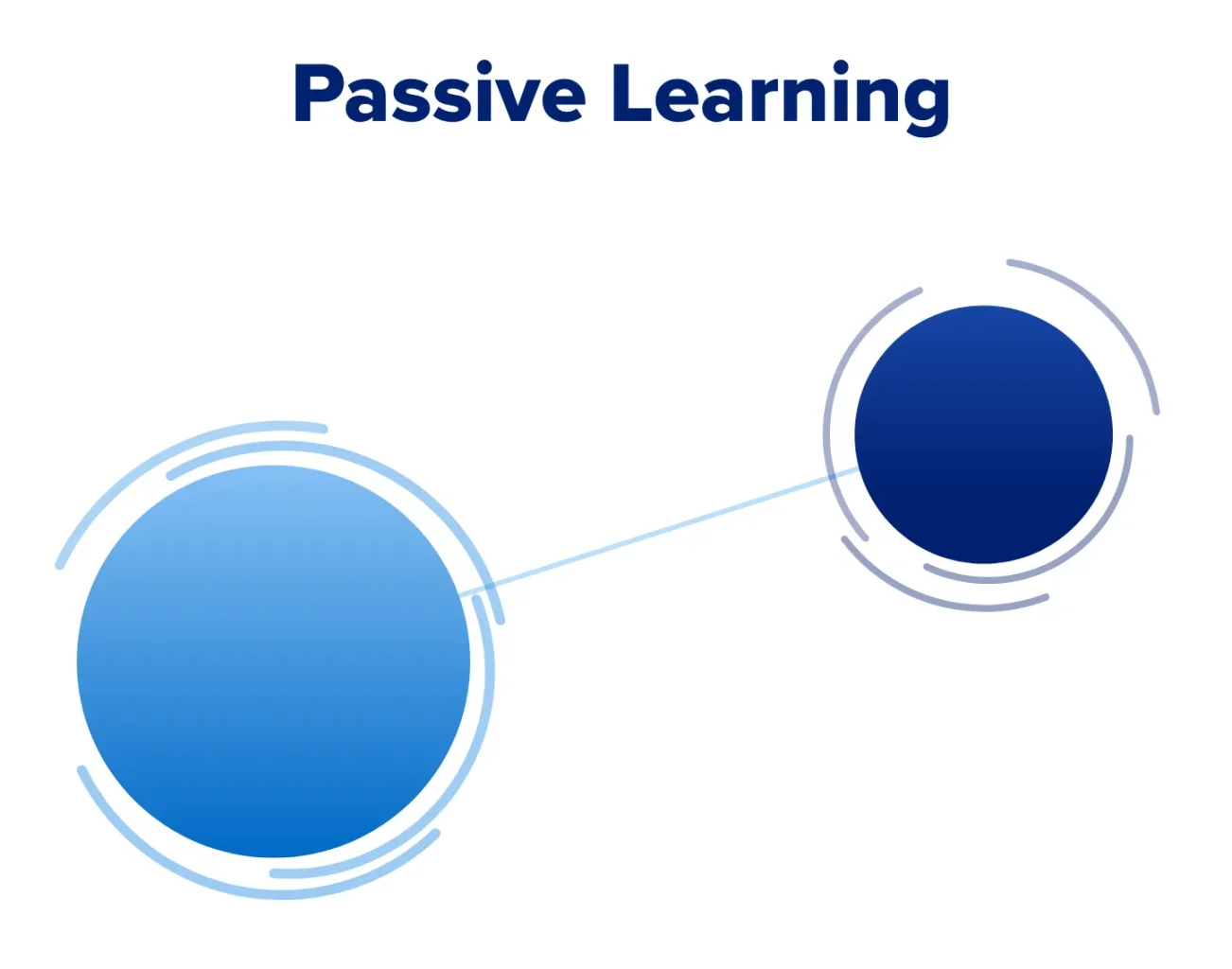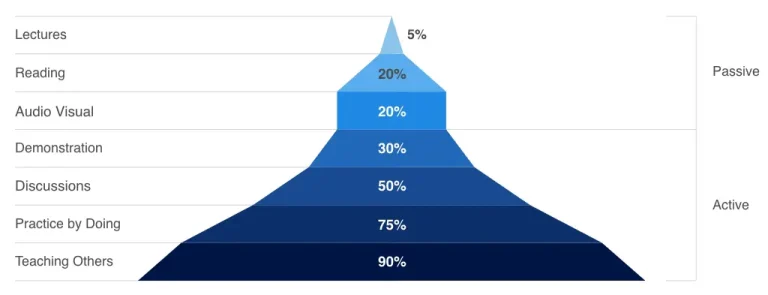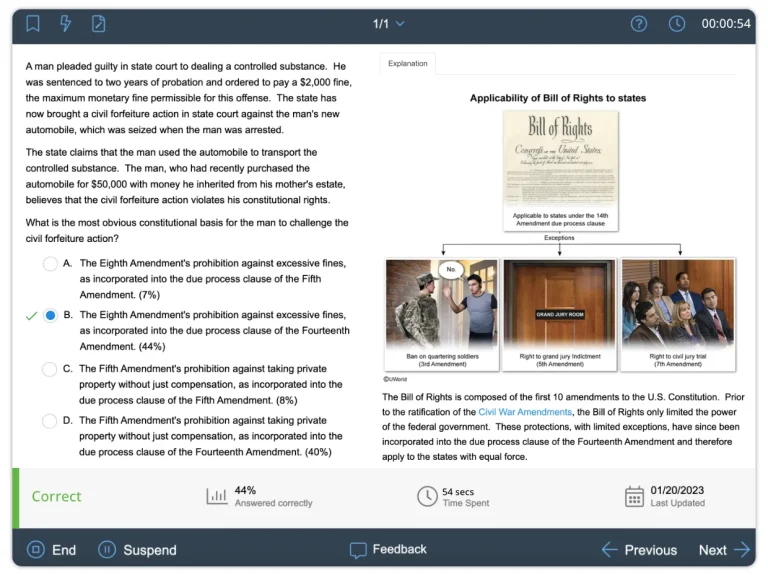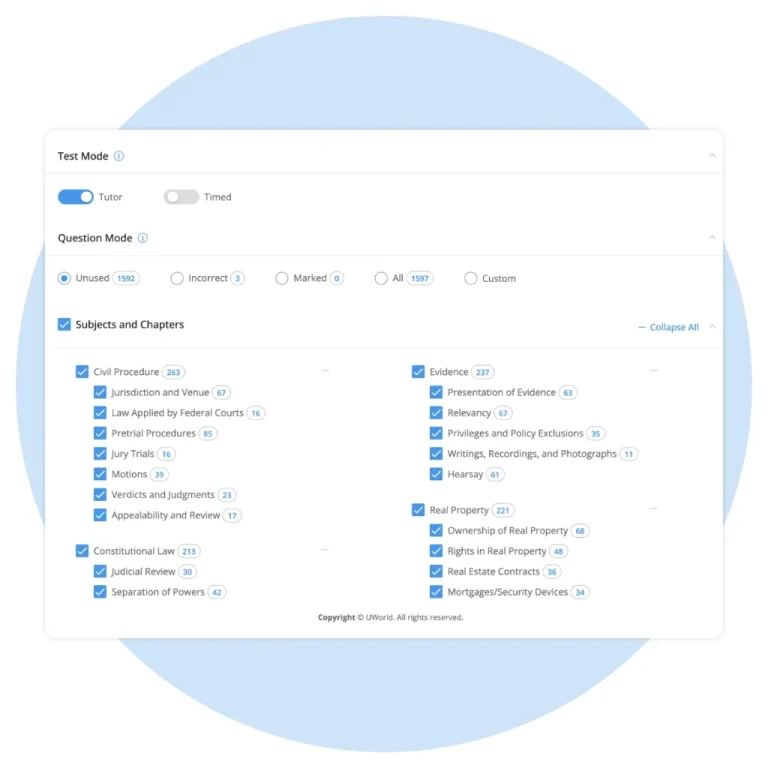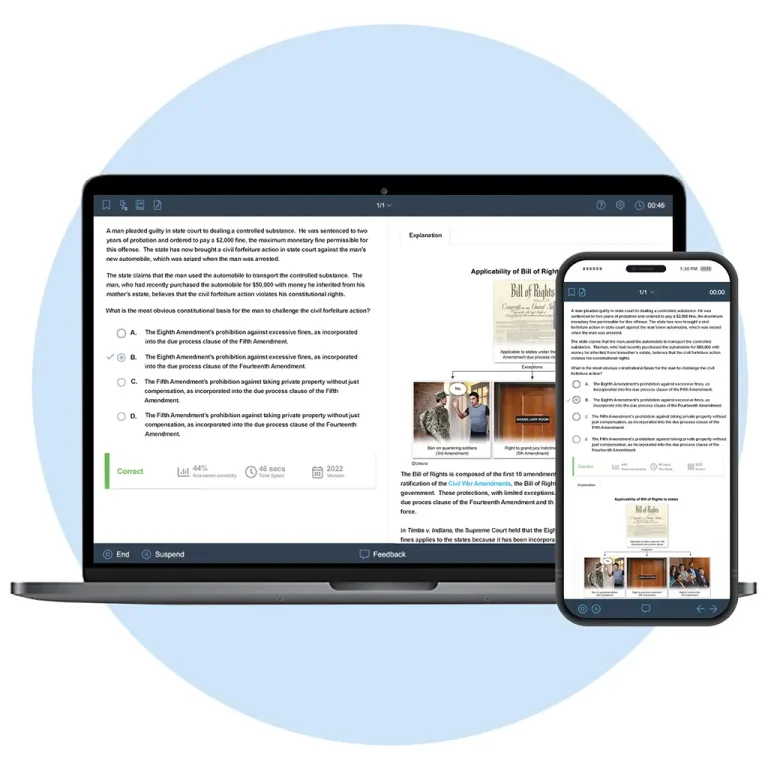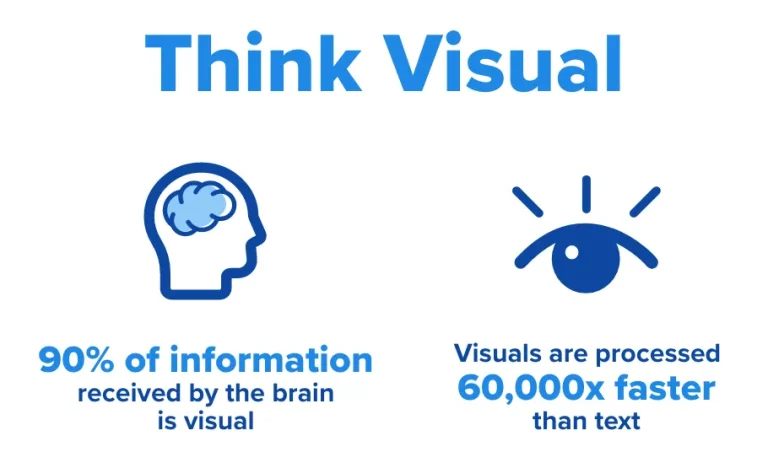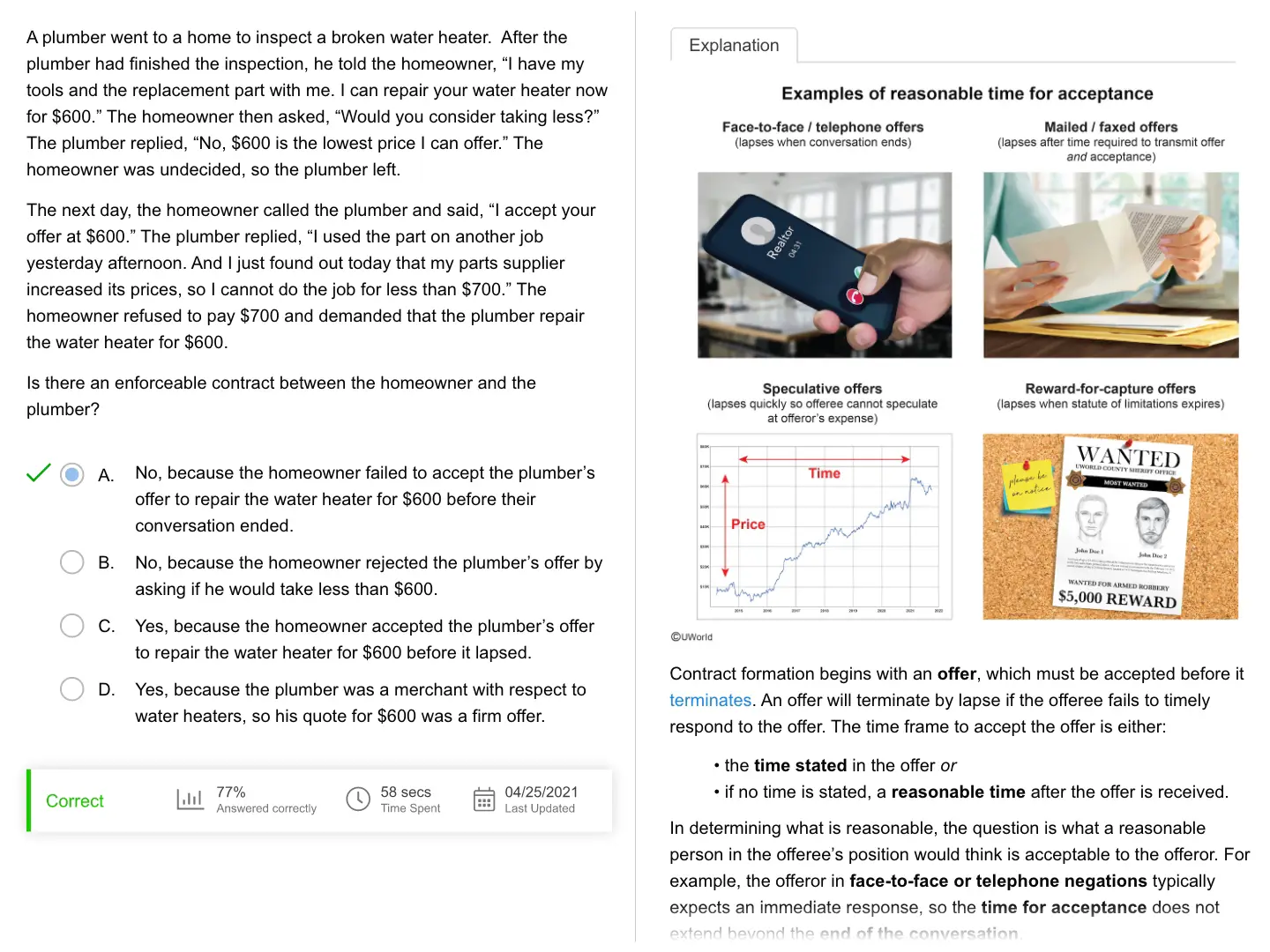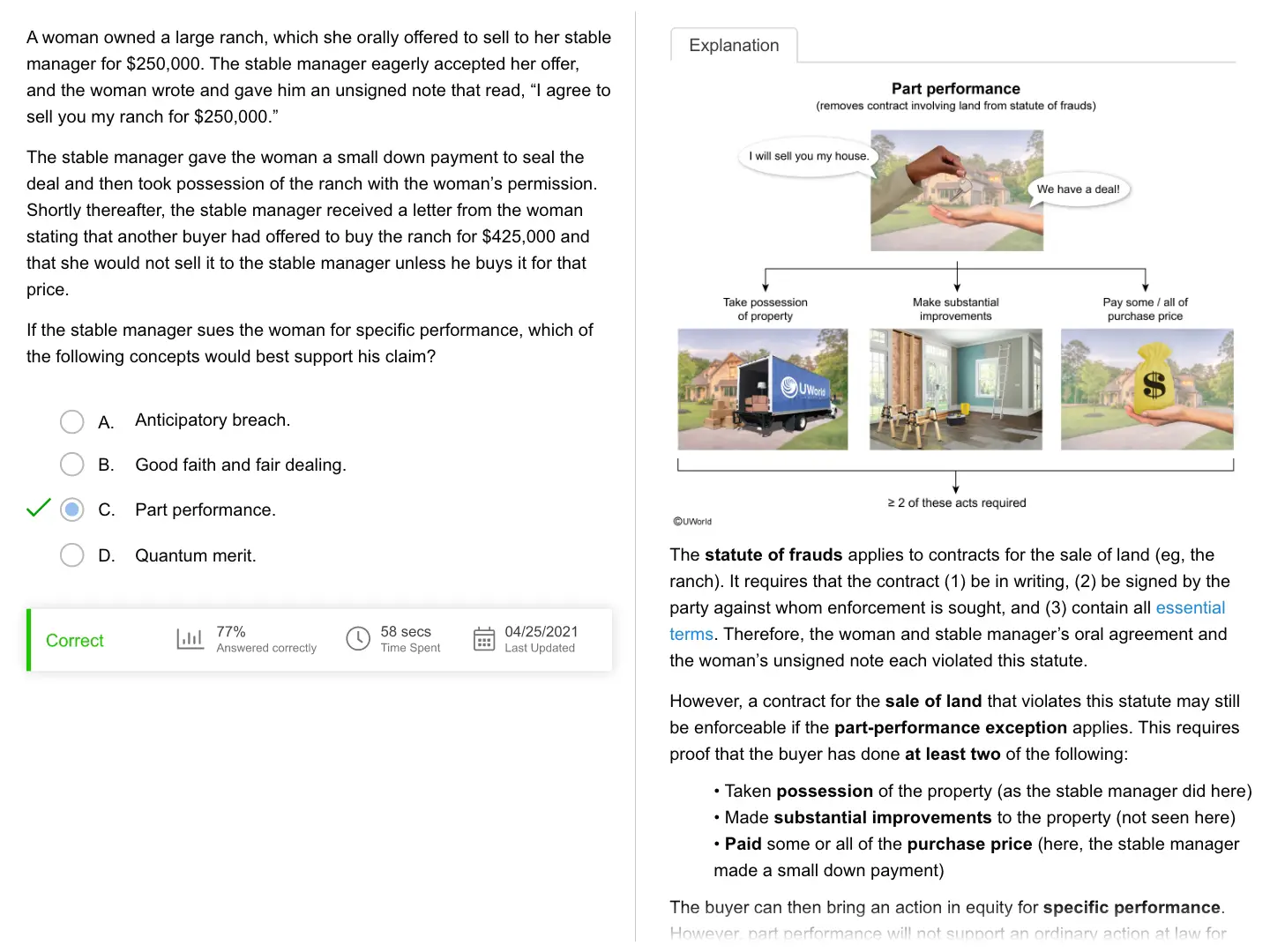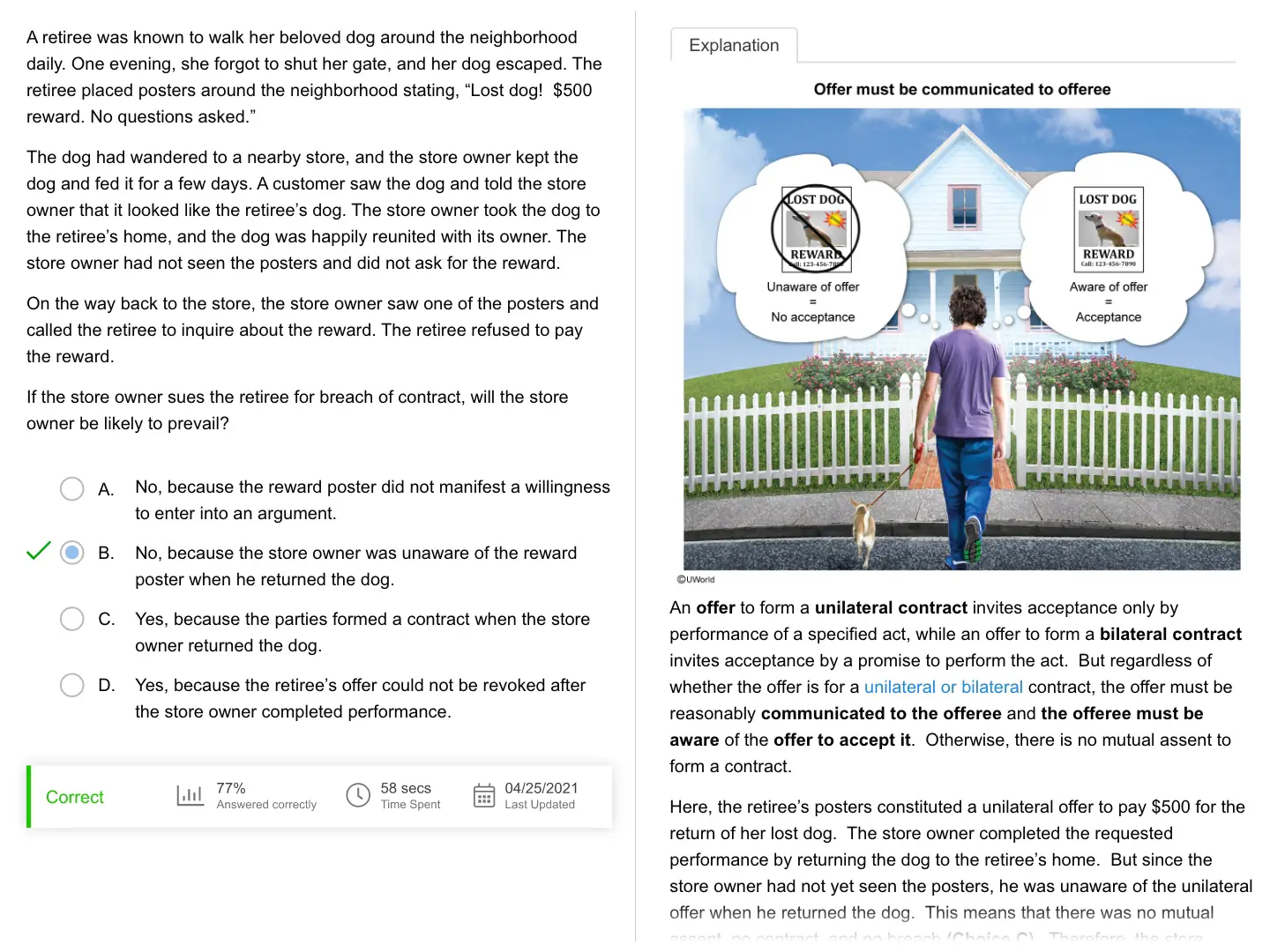Active Learning
Research-Backed Bar Exam Prep
Imagine a classroom full of athletes spending their days hunched over soccer textbooks. It would be ridiculous to expect such a cohort to excel on the field. The best way to improve their game, of course, is to play. So, why do most bar exam preparation resources neglect such an obvious blueprint for success? We at UWorld asked the same question. Then we developed a solution—test prep designed around the research-backed, tried-and-tested active learning method.
What is Active Learning?
All UWorld resources are built around an active learning methodology. Active learning is about increasing retention and understanding through engaging learning experiences that go beyond listening and passive note-taking. More stimulating experiences cement stronger memories. The phrase "neurons that fire together, wire together" comes from research showing that when multiple neural pathways are activated simultaneously, new connections form more efficiently. In short, neurons become friends after responding to the same stimuli.
We also know that the more brain areas activated, the better. Memories become more deeply embedded and more easily retrievable as the brain works harder to connect neurons from diverse regions. Reading that the US Constitution was written in 1787 over and over again (e.g., passive learning) may cement it in your memory, but active learning makes this process more efficient. For example, if you visualize the date among others on a timeline, view an image of the signing of the constitution, and debate with a peer over the conditions that led to its development, you will not only memorize this fact faster and retain it longer, but also create a web of associations that cement related information.
The differences between active learning and passive learning exercises are best visualized as a learning pyramid (see below). Notice that passive learning consists of activities that have retention rates of 5% -20%, while rates of retention for active learning exercises fall into the desirable 30%-90% range. Our bar exam prep products cover every block on the learning pyramid but focus on the highest-yielding. Just a few examples of how we implement active learning include our exam-like questions and customizable flashcards, access to feedback from dedicated essay graders, and the ability to generate unlimited, customizable practice tests.
UWorld's Active Learning Strategies and Benefits
Our active learning methodology is part of an integrated learning system. Start by studying content crafted by subject matter experts, then assess yourself with exam-level practice, measure your performance, and use that information to calibrate your study strategy and turn your weaknesses into strengths. This process creates a positive feedback loop the output of which is subject mastery and bar exam success.
Study
QBank questions feature detailed explanations for each answer choice and visual aids that break down complex concepts.
Assess
Simulate the actual MBE with exam-style questions, customizable practice tests, and a comprehensive mock exam.
Measure
Track your progress and measure your performance so you can target your weaknesses, and turn them into strengths.
Learn by Doing
At UWorld Legal, we believe that if practice feels like the real exam, then the real exam will feel like practice. Learning through simulation and application (i.e., practice by doing) sits at the foundation of the learning pyramid and our bar exam preparation strategy. The real exam licensed questions are routinely updated while thousands of others have been carefully crafted by our dedicated team of in-house legal experts to meet or exceed exam-level difficulty and replicate exam format and style.
Practicing with questions like the one pictured above allows you to build familiarity with the subject matter and fact patterns you’ll confront on the actual exam. Once you're feeling confident, you can simulate components like the Multistate Bar Exam (MBE®) with a comprehensive 200-question mock exam or essays and tasks from past Multistate Essay Exams (MEE®) and Multistate Performance Tests (MPT®). Having done all of this, you’ll develop an accurate understanding of where you stand and what you need to improve so that there are no surprises on the actual exam.
Learn with Focus
Many students struggle with staying organized or keeping up with a study plan over several months. This conflict occurs because they have a hard time prioritizing which subjects to focus on and find themselves deliberating how much is enough. This problem is compounded when students attempt to use too many study materials or prep courses.
At UWorld, we guide you step-by-step and help you focus on what’s most important for you. Practice tests, paired with immediate performance metrics, give you control over your study plan. Customize your practice test by subject, chapter, unused or previously incorrect questions, or custom tag. By focusing on the most relevant topics and targeting their weaker subjects, students can study more efficiently without burning out.
All of these features sync to your mobile device so you can focus on prepping for the bar anytime and from anywhere. Swap social media scrolling for Civil Procedure review. With the UWorld mobile app, you can swipe through your custom flashcard decks in an Uber, take a practice test during your lunch break, or monitor your performance while you unwind on the couch.
Simplify your Learning
UWorld's active learning approach maximizes retention while eliminating inefficient study time. Active learning may be superior to passive learning, but reading, lectures, and visual aids are still an important part of learning and cannot be neglected. Take our visual aids as an example, one study found that after three days their subjects retained 10-20% of spoken or written information. In contrast, they retained 65% of the visual information they consumed. This is why we incorporate high-quality charts, images, graphs, and diagrams into our flashcards and answer explanations.
Our in-depth explanations, and vivid illustrations make difficult concepts easy to understand while also increasing retention and comprehension. Our explanations for both correct and incorrect answer choices give students a thorough understanding of critical underlying concepts and minimize the need for memorization. Our reviews also teach students the critical thinking skills necessary to succeed on the bar exam. Ultimately, our goal for students who use our products is concept mastery, not cramming.
The Verdict
All of our bar prep products are designed around the research-backed active-learning methodology. We follow this model because at UWorld we don’t believe in shortcuts or gaming the exam. We believe that superior exam results are the byproduct of training students to think like lawyers. Ultimately, as it is with sports like soccer, how you practice is how you’ll perform. Therefore, by routinely practicing with thousands of exam-level questions, when you sit down on test day, the actual exam will feel like practice.
But don’t just take our word for it, give us a try and discover for yourself what it’s like to experience active learning the UWorld way.
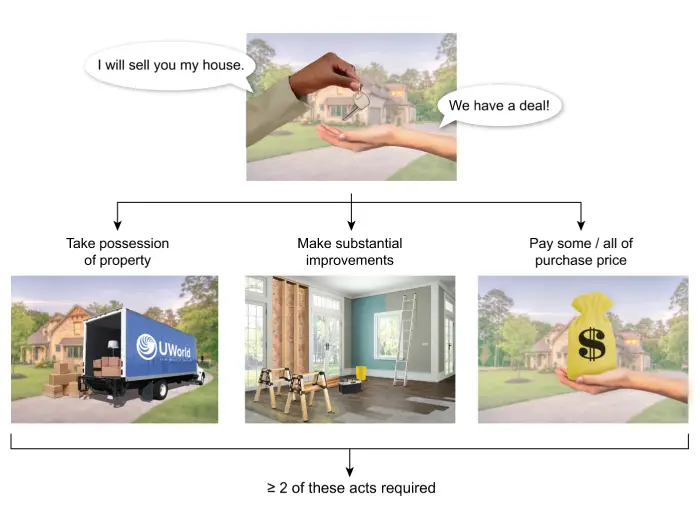
Supporting Research in Active Learning
Cavenagh, S. (2016). The spark of learning: Energizing the college classroom with the science of emotion. Morgantown, WV: West Virginia Press.
Freeman, S., Eddy, S.L., McDonough, M., Smith, M.K., Okoroafor, N., Jordt, H., & Wenderoth, M.P. (2014). Active learning increases student performance in science, engineering, and mathematics. Proceedings of the National Academy of Sciences 111 (23) 8410-8415.
Henning, J.A., Ballen, C. J., Molina, S. A., Cotner, S. (2019). Hidden identities shape student perceptions of active learning environments. Frontiers in Education 4, 129.
Kuh, G., O’Donnell, K., & Schneider, C. (2017). HIPs at ten. Change, 49(5), 8-16.
Owens, D., Sadler, T., Barlow, A., & Smith-Walters, C. (2017). Student motivation from and resistance to active learning rooted in essential science practices. Research in Science Education.
Prince, M. (2004) Does active learning work? A review of the research. Journal of Engineering Education 93 (3) 223-231.
